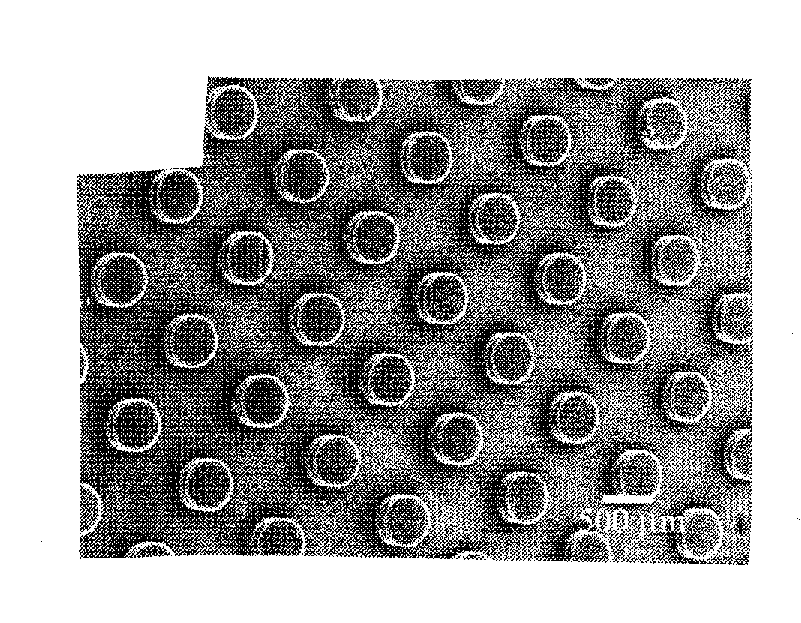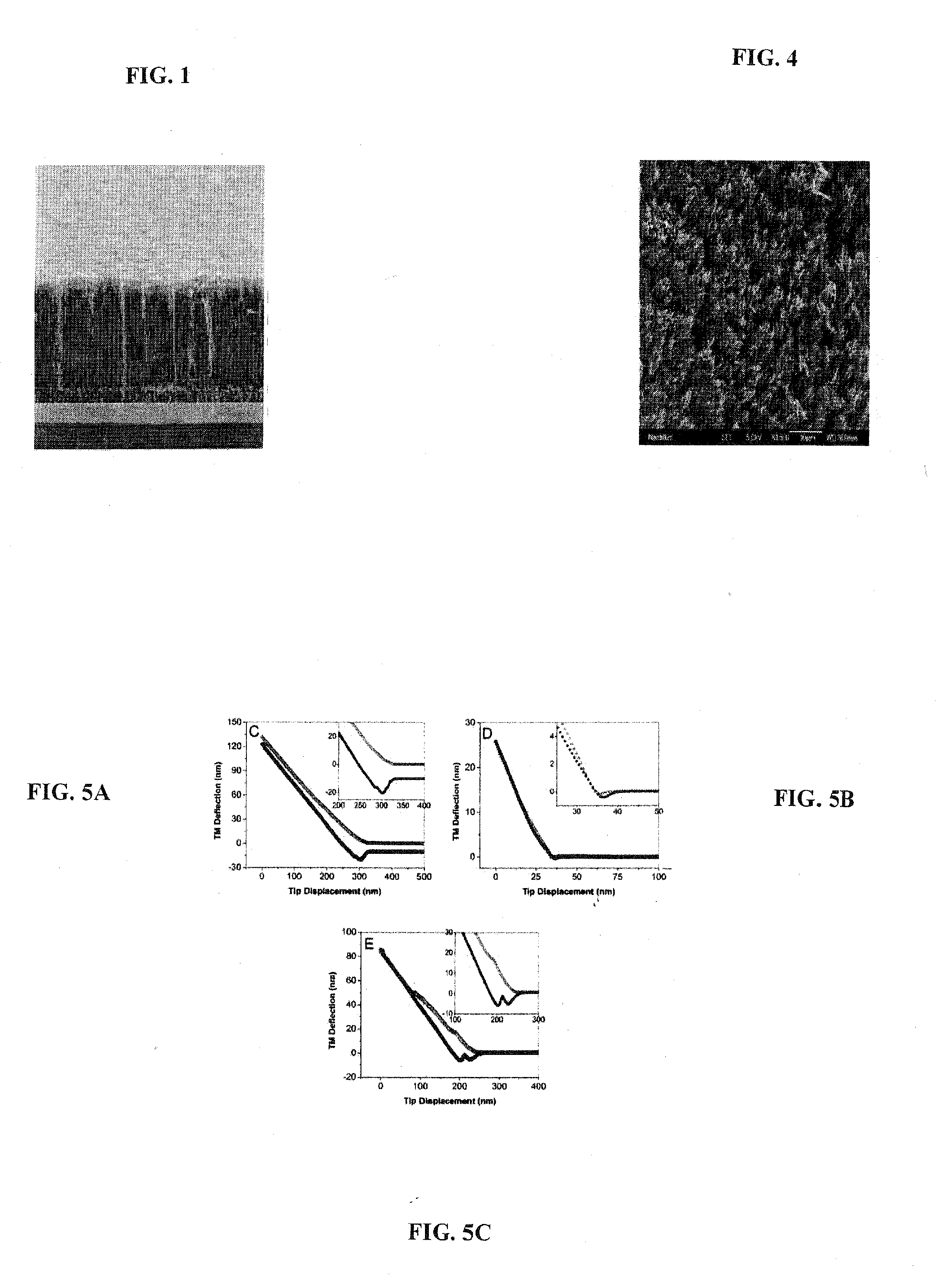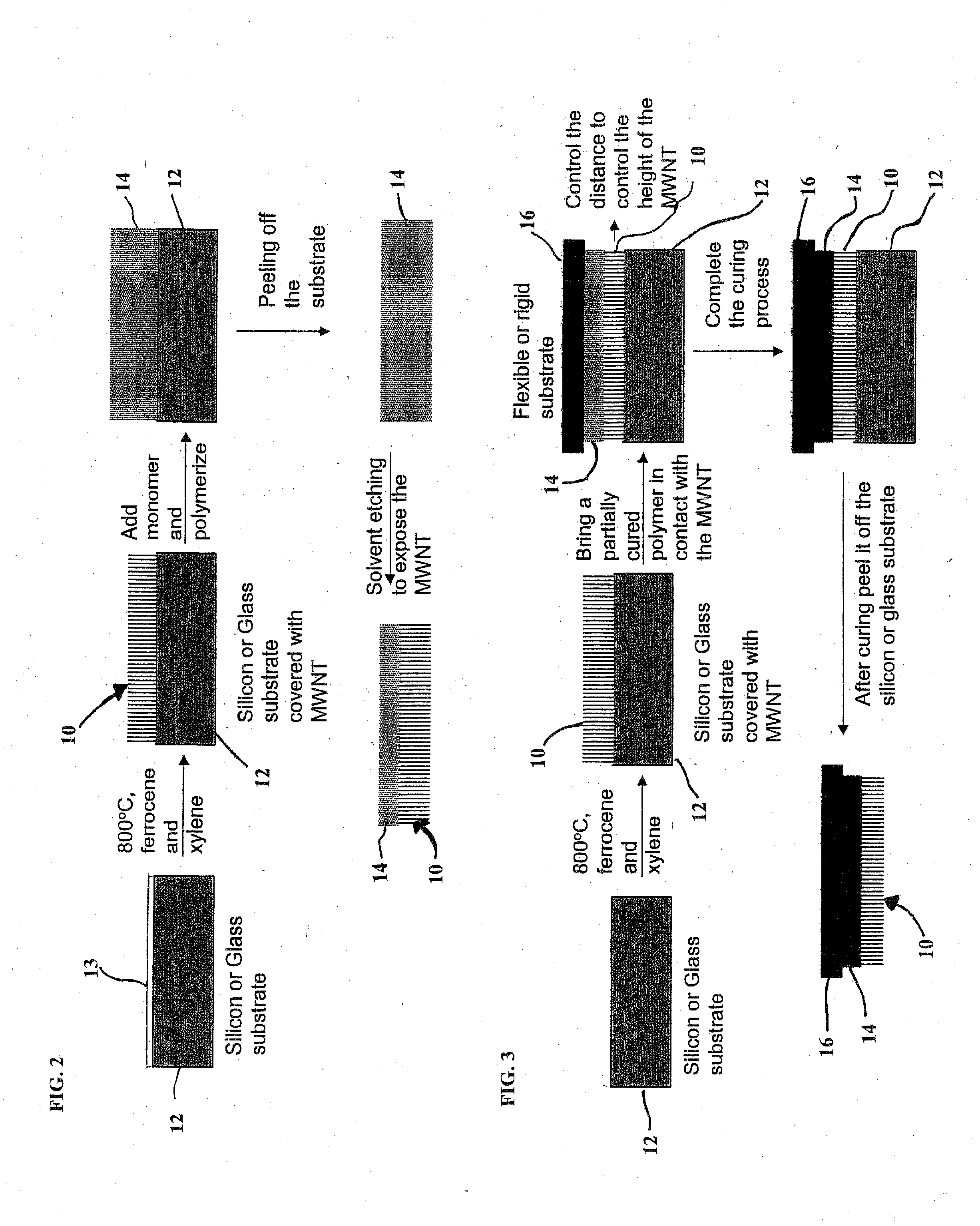Aligned Carbon Nanotube-Polymer Materials, Systems and Methods
a carbon nanotube and polymer technology, applied in the field of composite carbon nanostructures, can solve the problems of low thermal and electrical conductivity, inability to provide synthetic systems, and inability to meet the requirements of the structure,
- Summary
- Abstract
- Description
- Claims
- Application Information
AI Technical Summary
Benefits of technology
Problems solved by technology
Method used
Image
Examples
Embodiment Construction
[0026]Turning now to the FIGS., a first embodiment of a carbon nanostructure / polymer composite material according to the invention will be described with reference to FIGS. 1-4, wherein a large number of carbon nanostructures, such as multi-walled carbon nanotubes (MWNT) 10 are formed on a substrate 12 as shown in FIG. 1. The growth of vertically aligned MWNT 10 on a substrate 12, such as silicon substrate, may be performed in any suitable manner, with various approaches having been developed. Alternatively, the nanostructures may be single-walled nanotubes, or nanosheets or other nanostructures formed of carbon.
[0027]One method is to selectively grow carbon nanotubes on silica templates located on a silicon substrate at set forth in Z. J. Zhang, B. Q. Wei, G. Ramanath, P. M. Ajayan, Appl. Phys. Lett. 77, 3764 (2000), which is hereby incorporated herein by reference. The use of this template structure is advantageous in that it does not require the deposition and patterning of a cat...
PUM
| Property | Measurement | Unit |
|---|---|---|
| Length | aaaaa | aaaaa |
| Length | aaaaa | aaaaa |
| Length | aaaaa | aaaaa |
Abstract
Description
Claims
Application Information
 Login to View More
Login to View More - R&D
- Intellectual Property
- Life Sciences
- Materials
- Tech Scout
- Unparalleled Data Quality
- Higher Quality Content
- 60% Fewer Hallucinations
Browse by: Latest US Patents, China's latest patents, Technical Efficacy Thesaurus, Application Domain, Technology Topic, Popular Technical Reports.
© 2025 PatSnap. All rights reserved.Legal|Privacy policy|Modern Slavery Act Transparency Statement|Sitemap|About US| Contact US: help@patsnap.com



